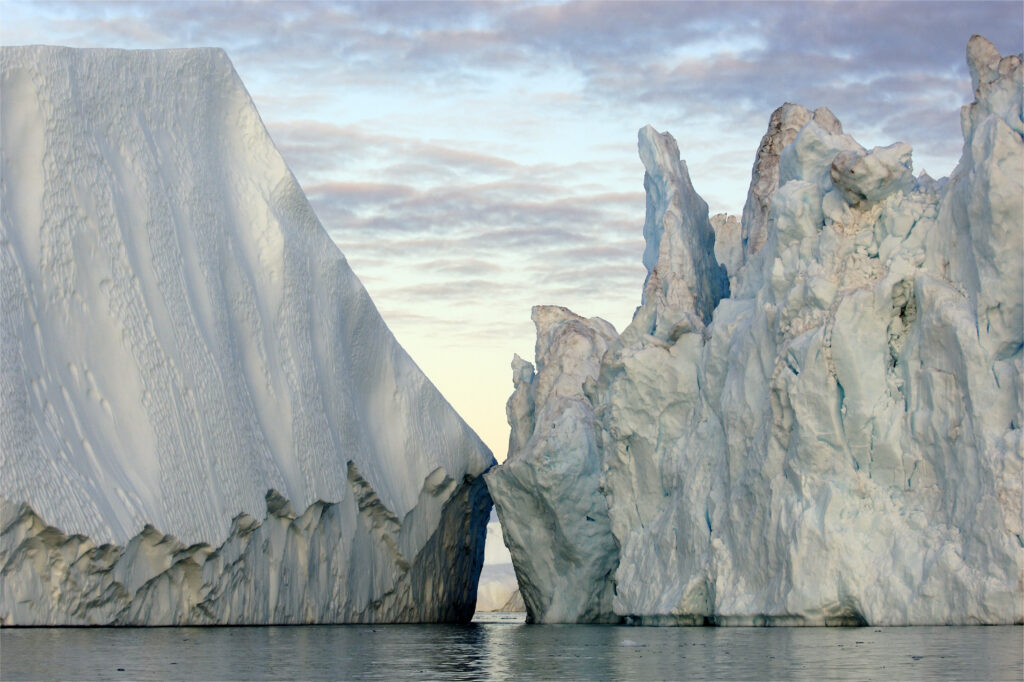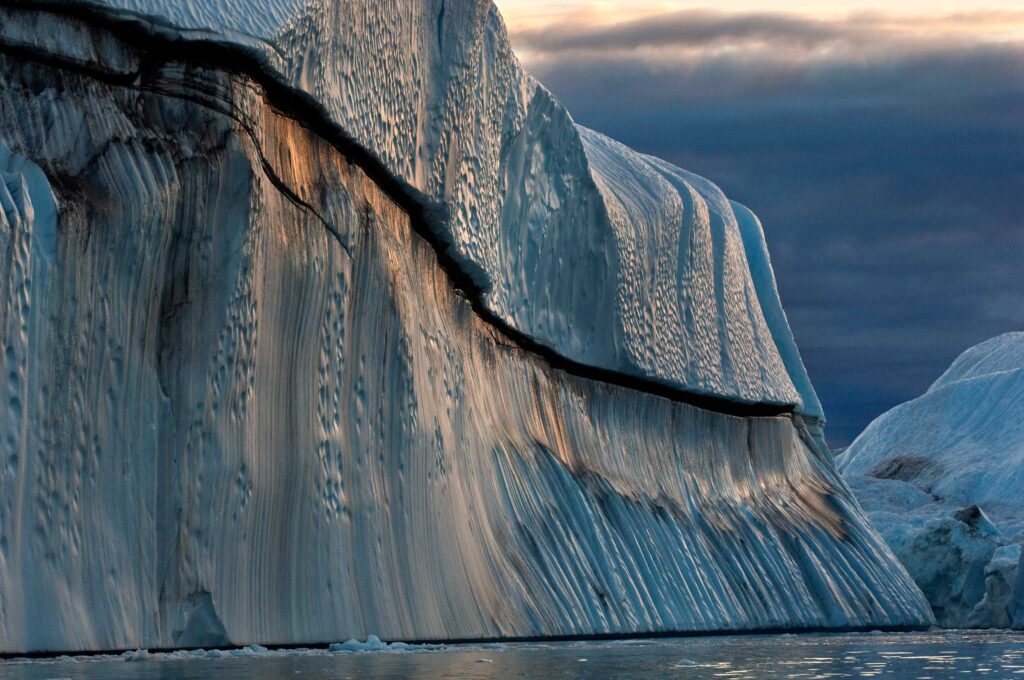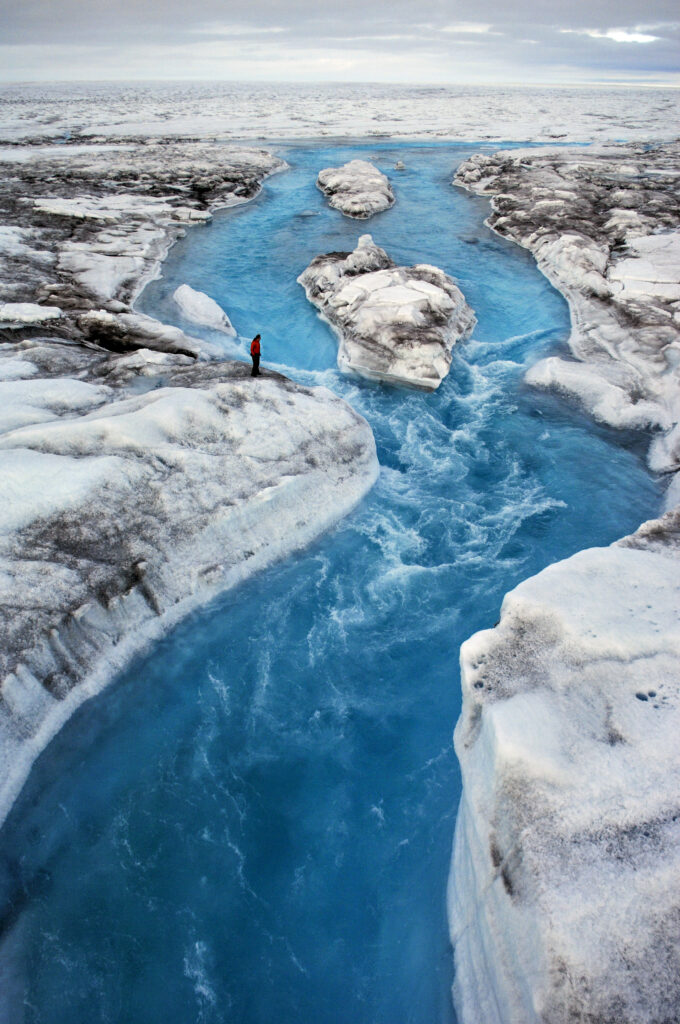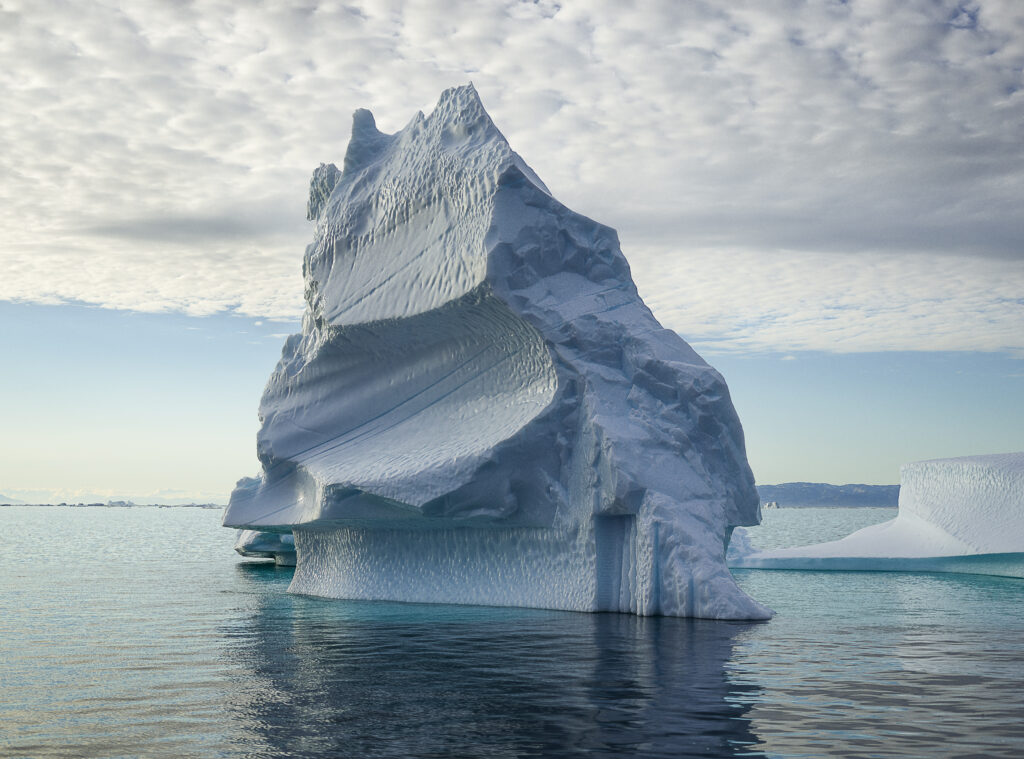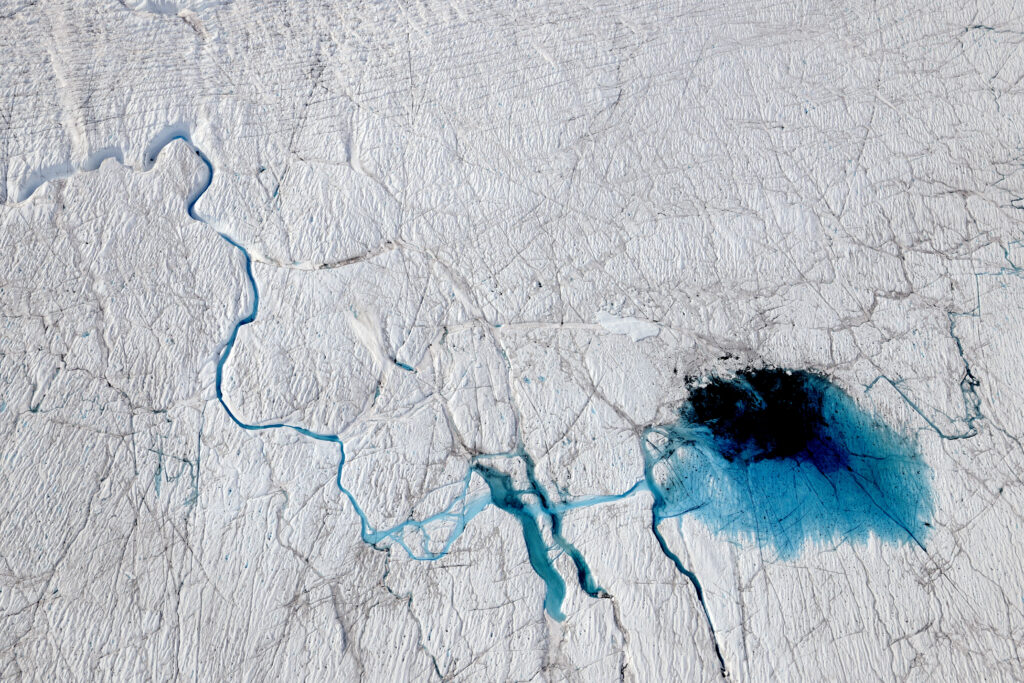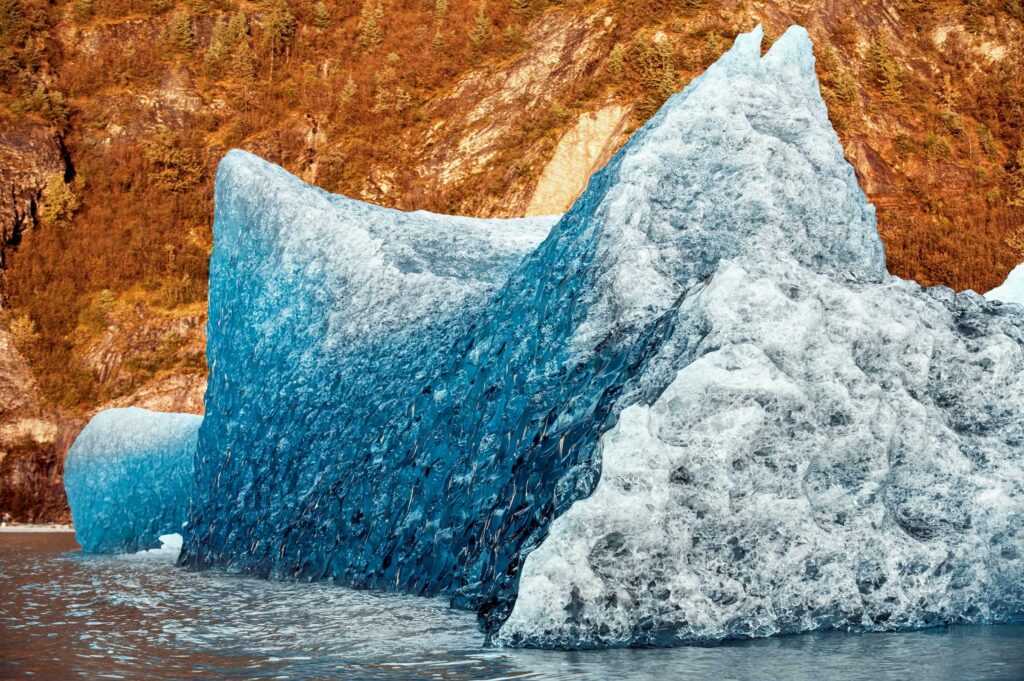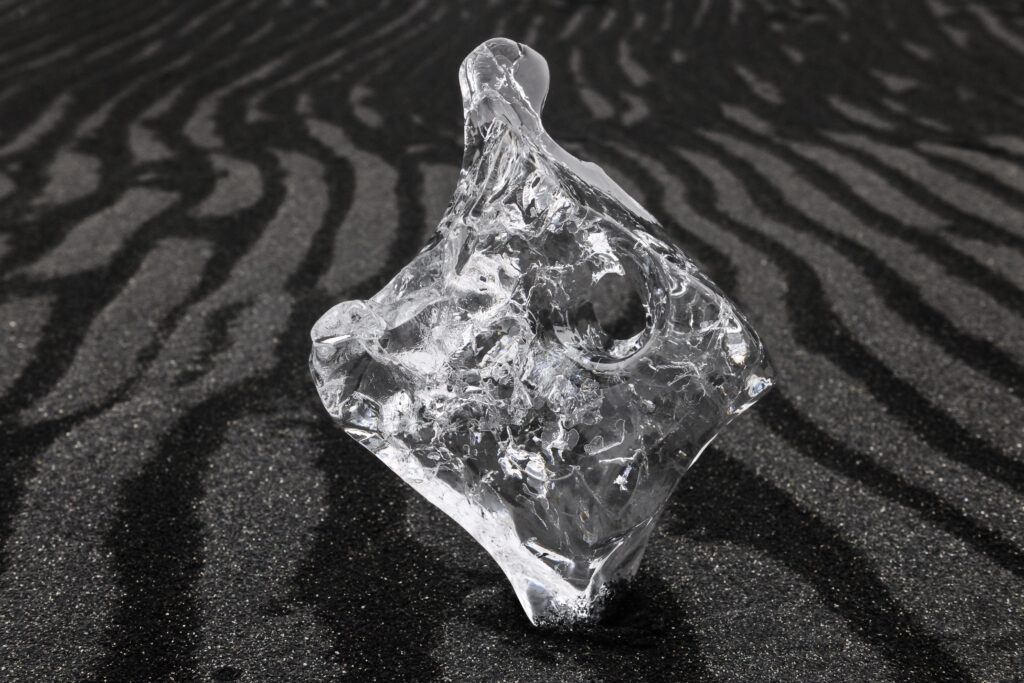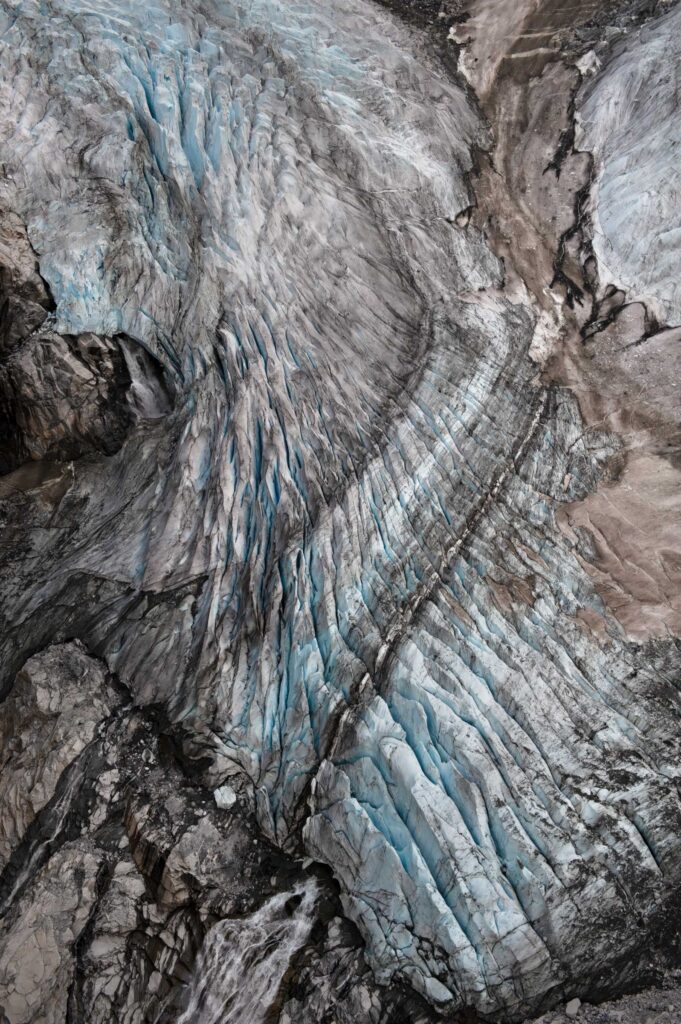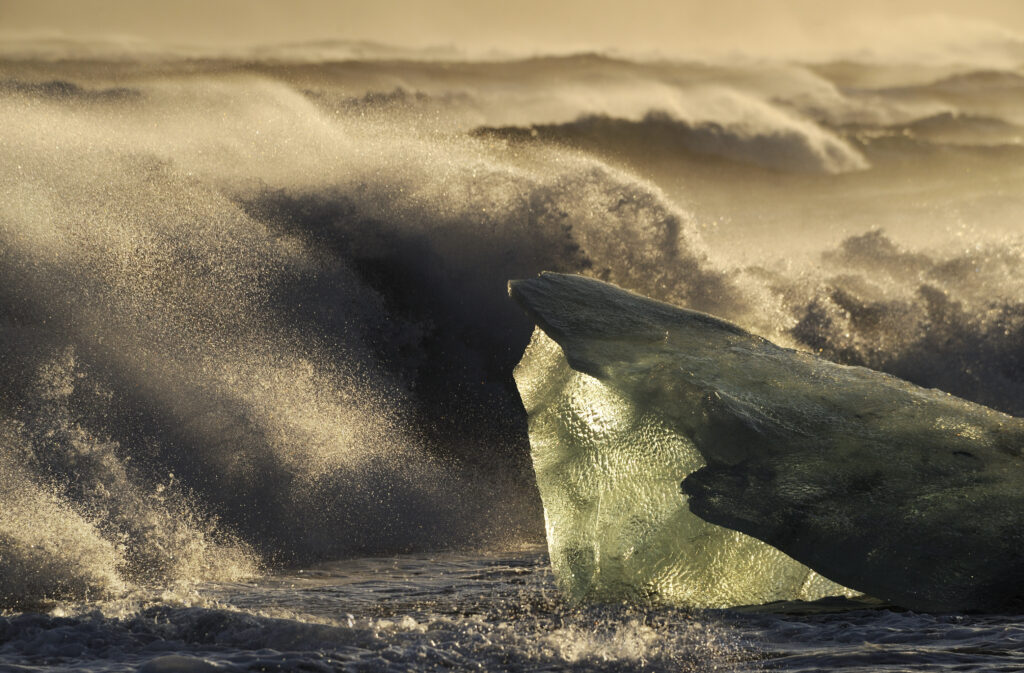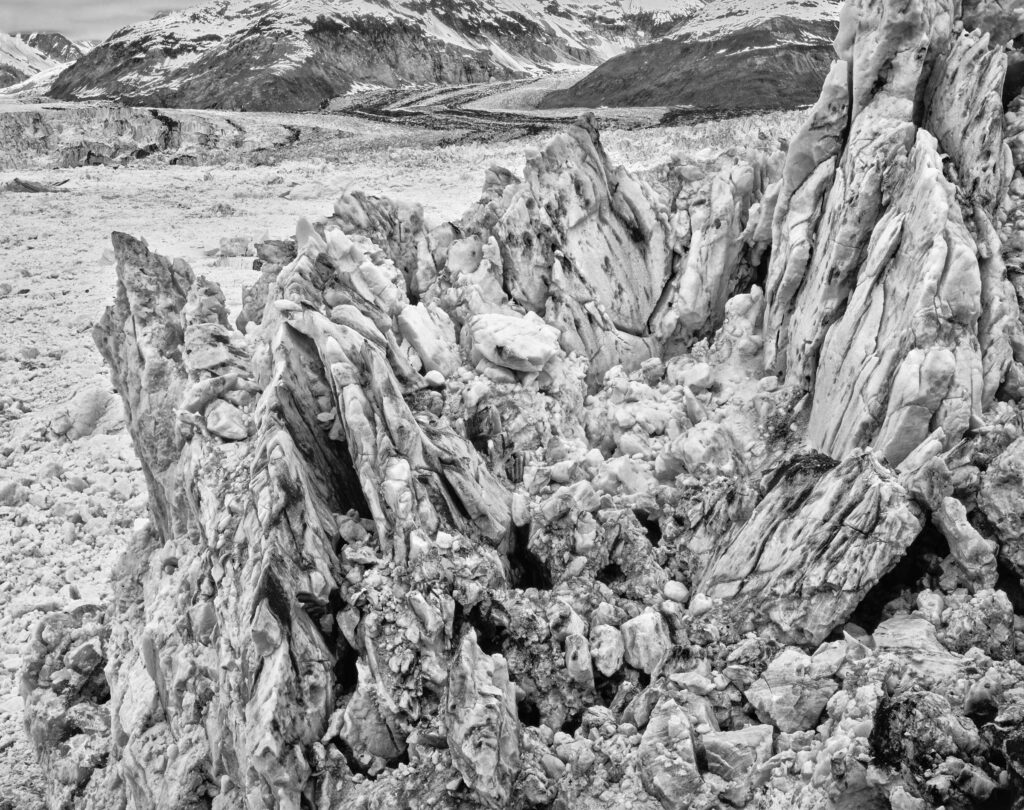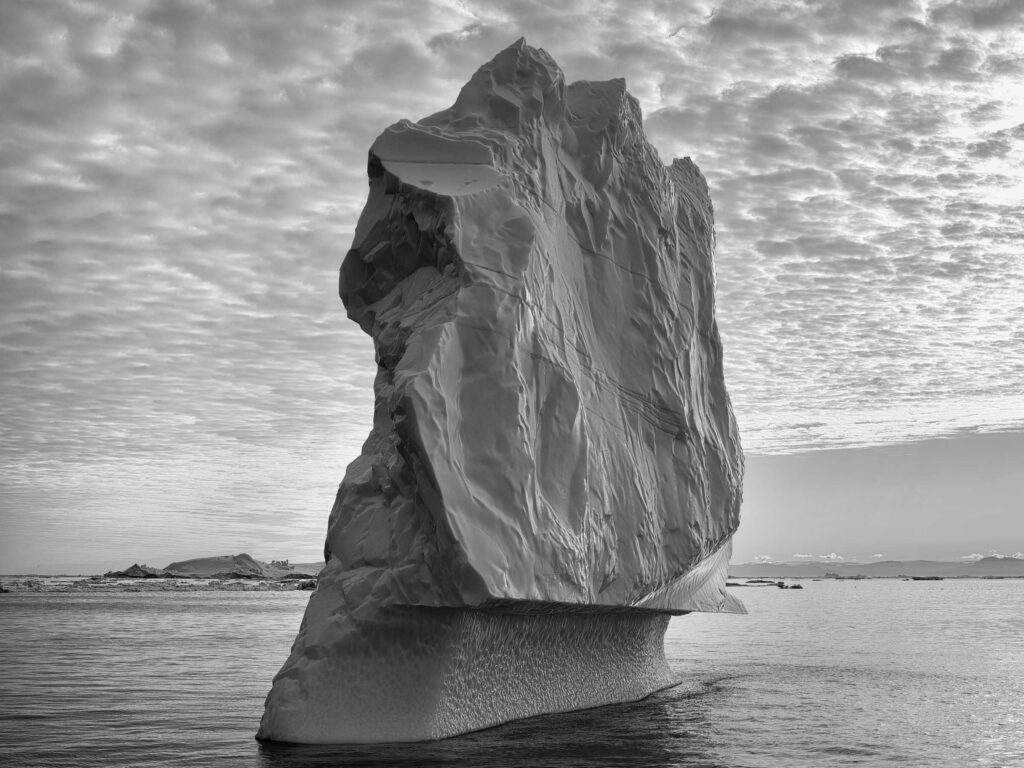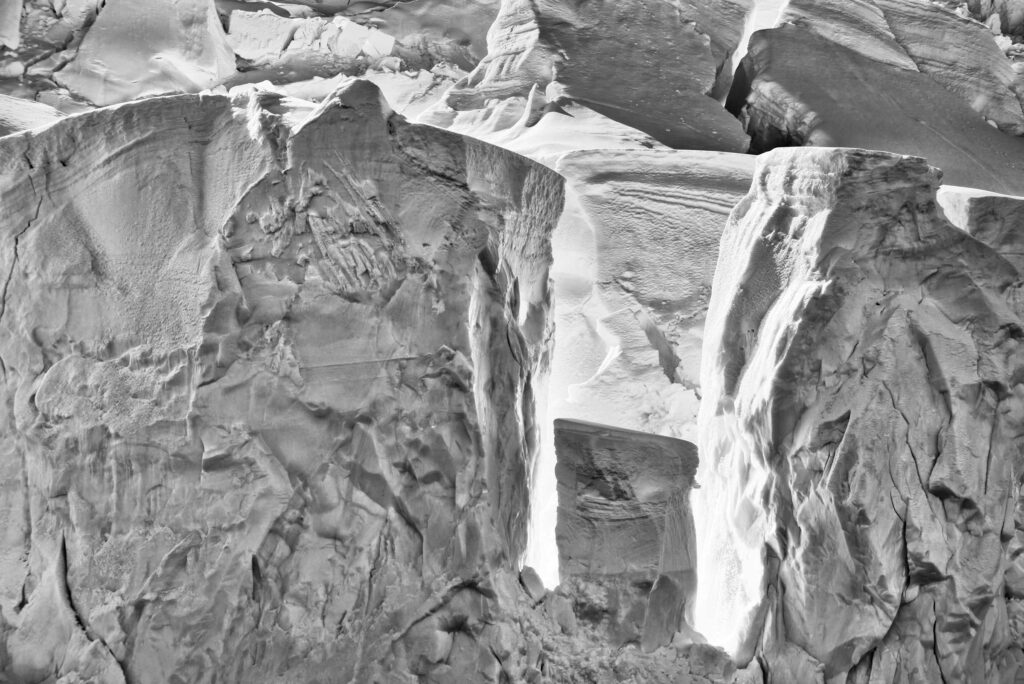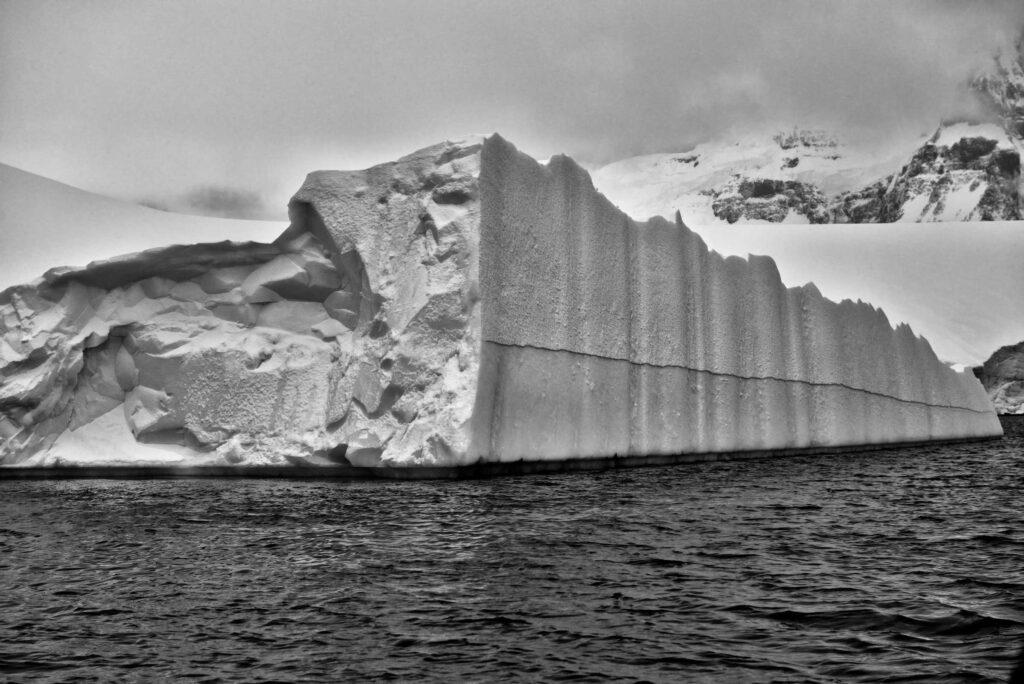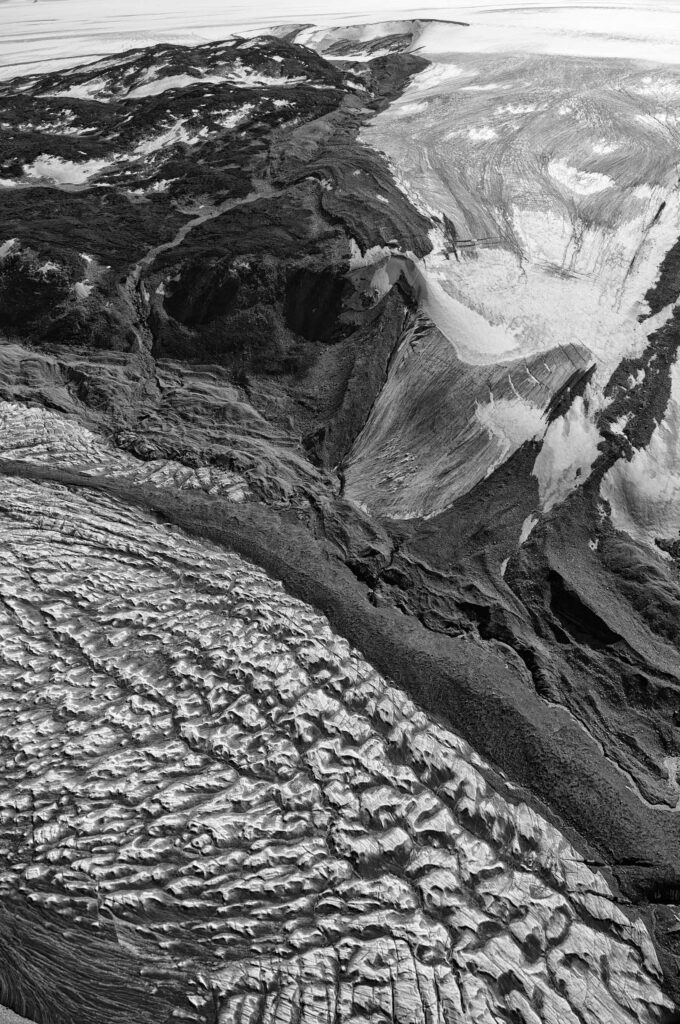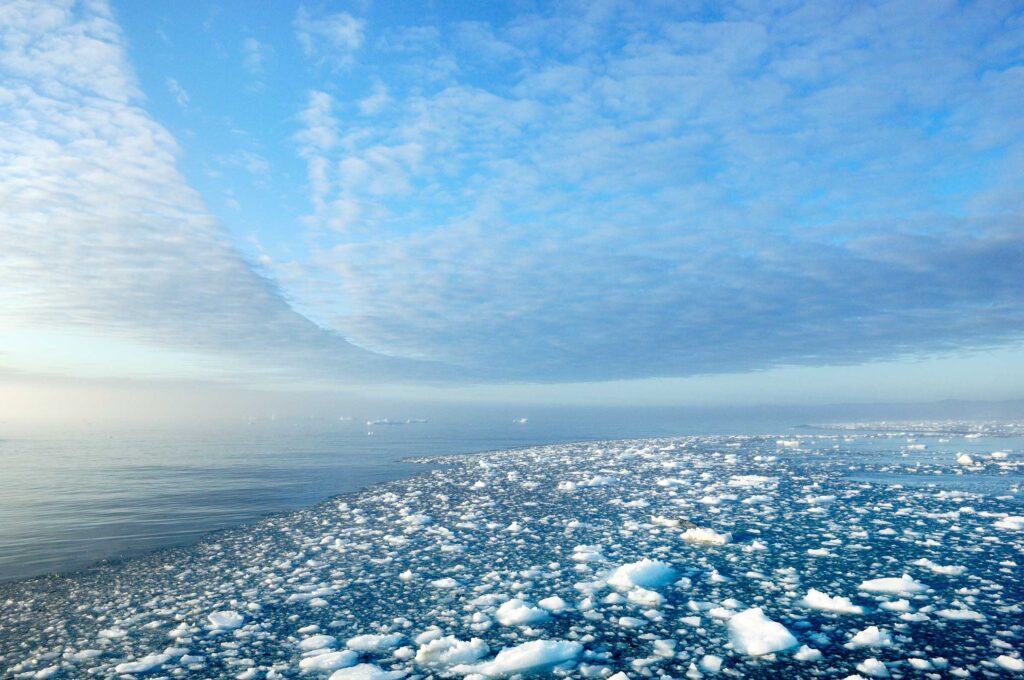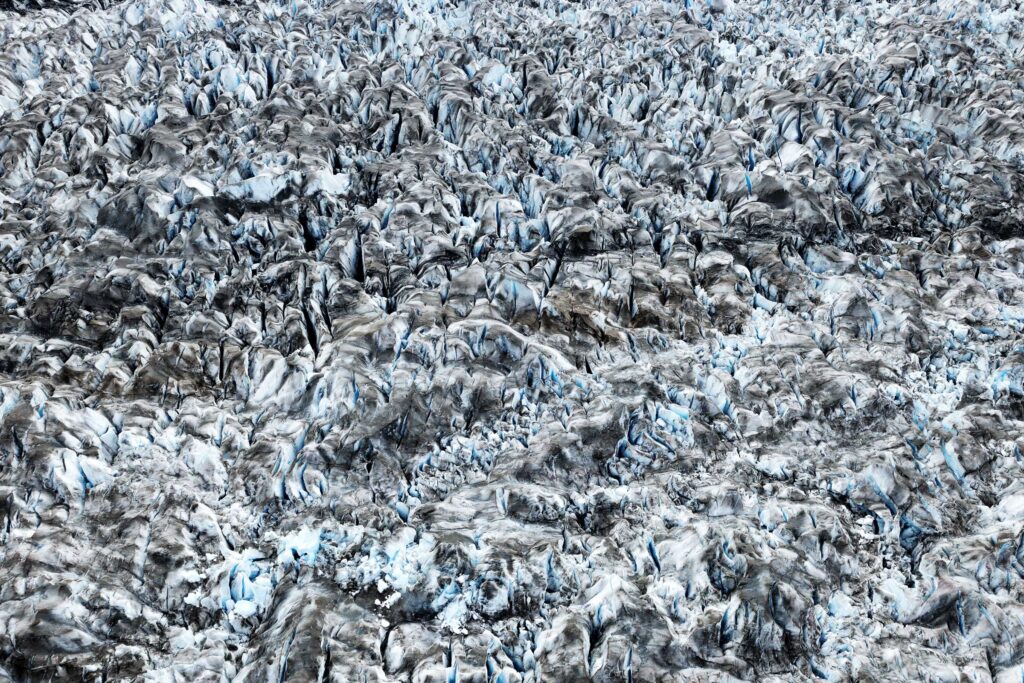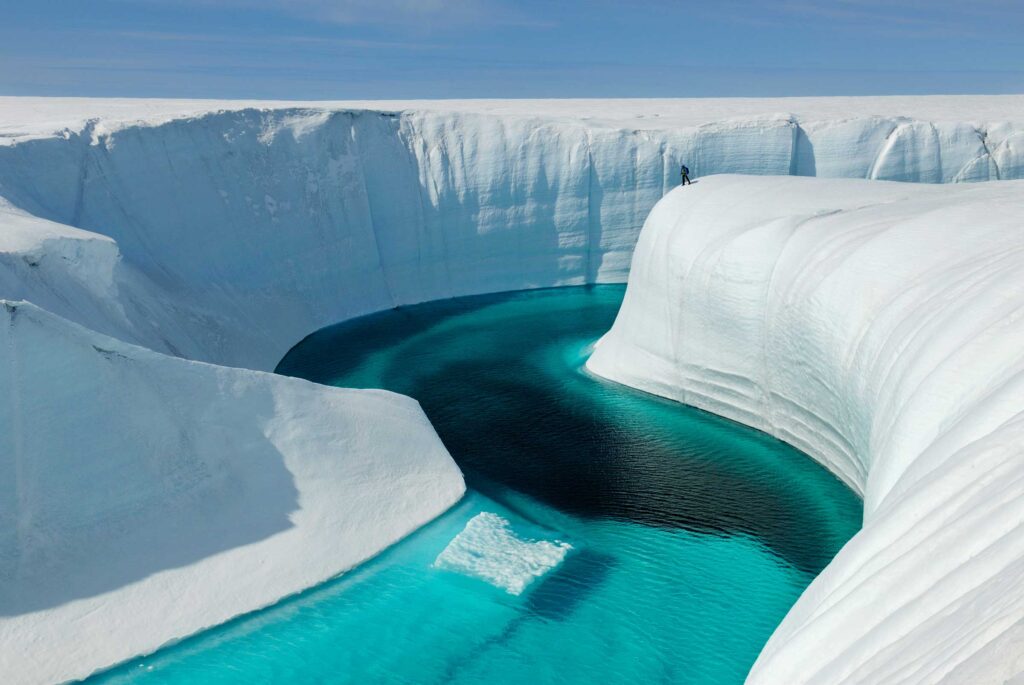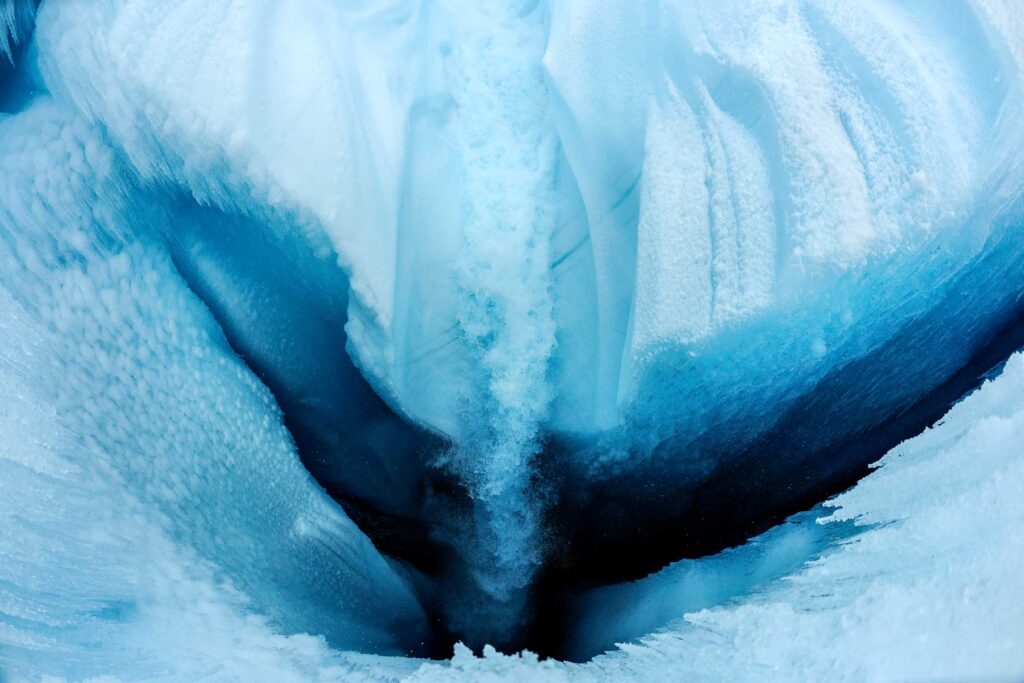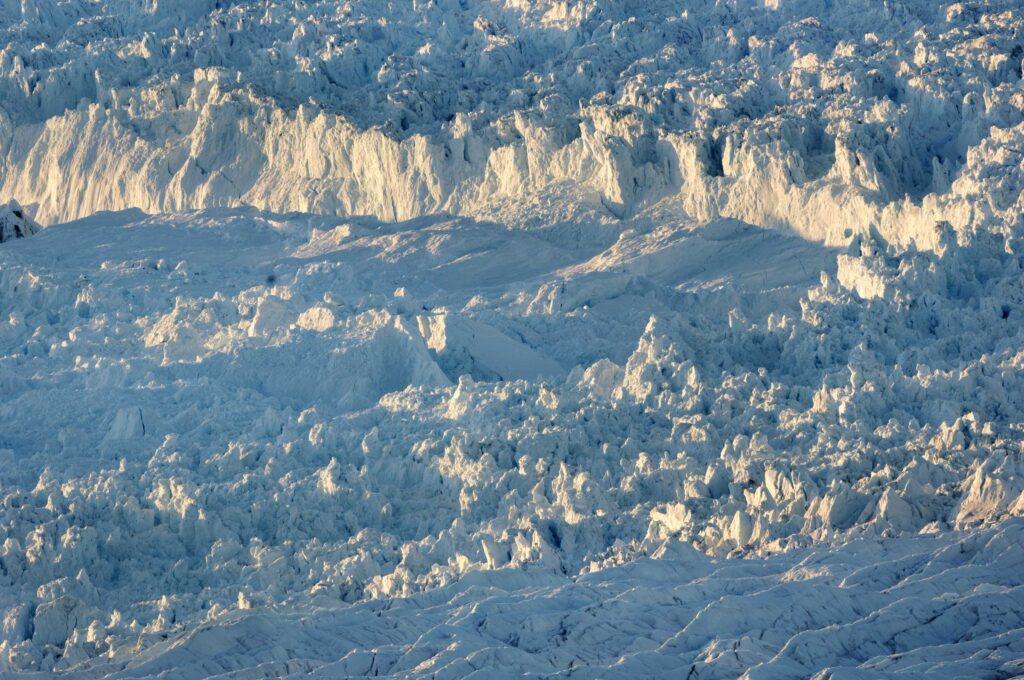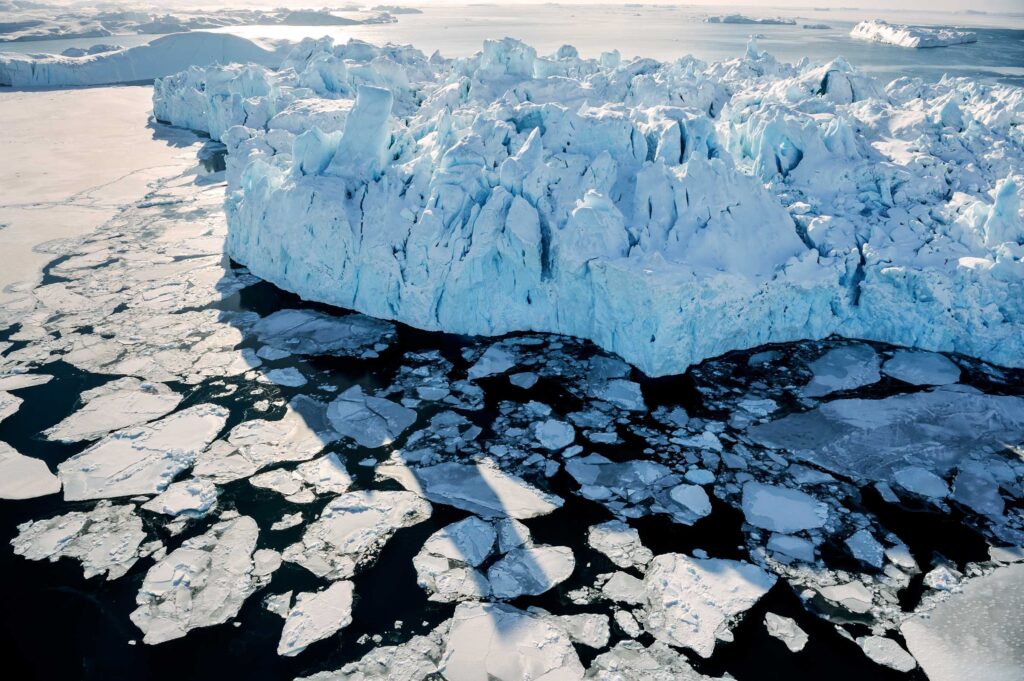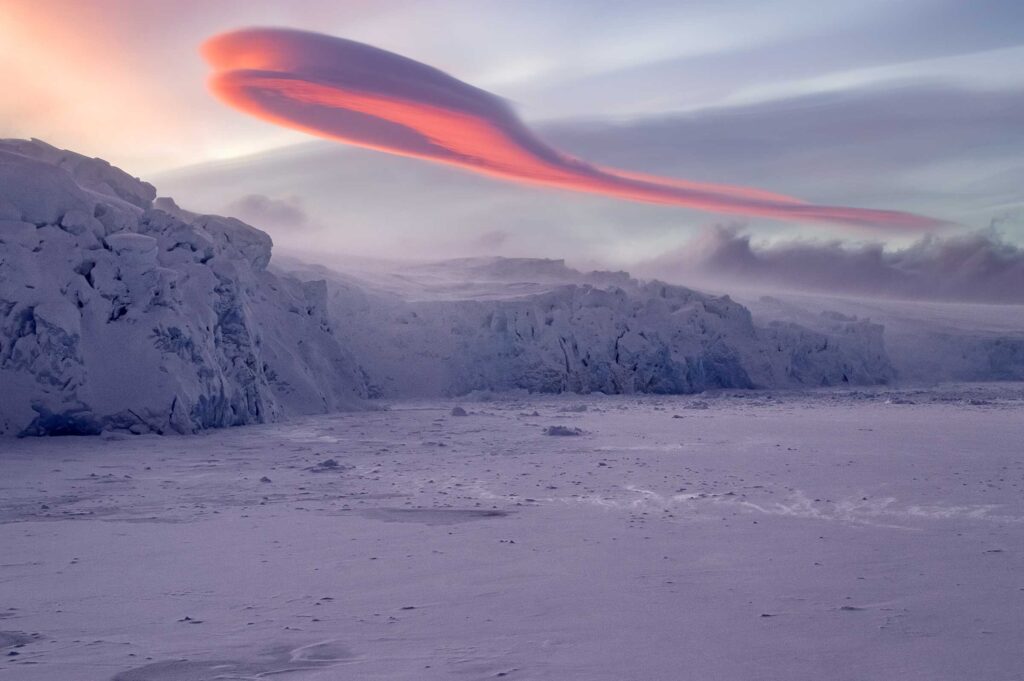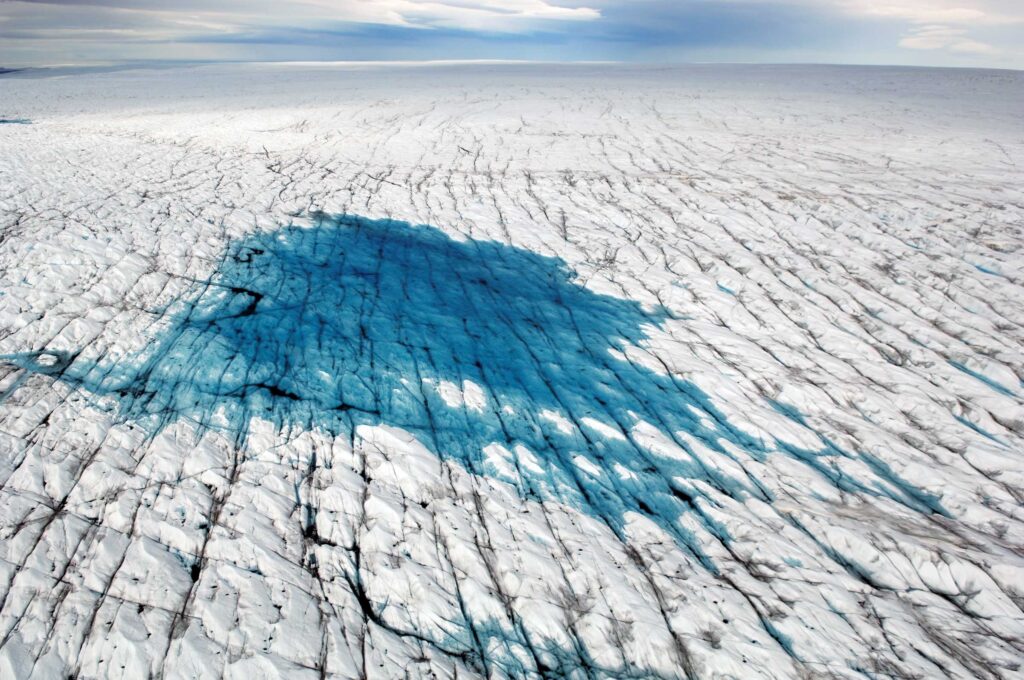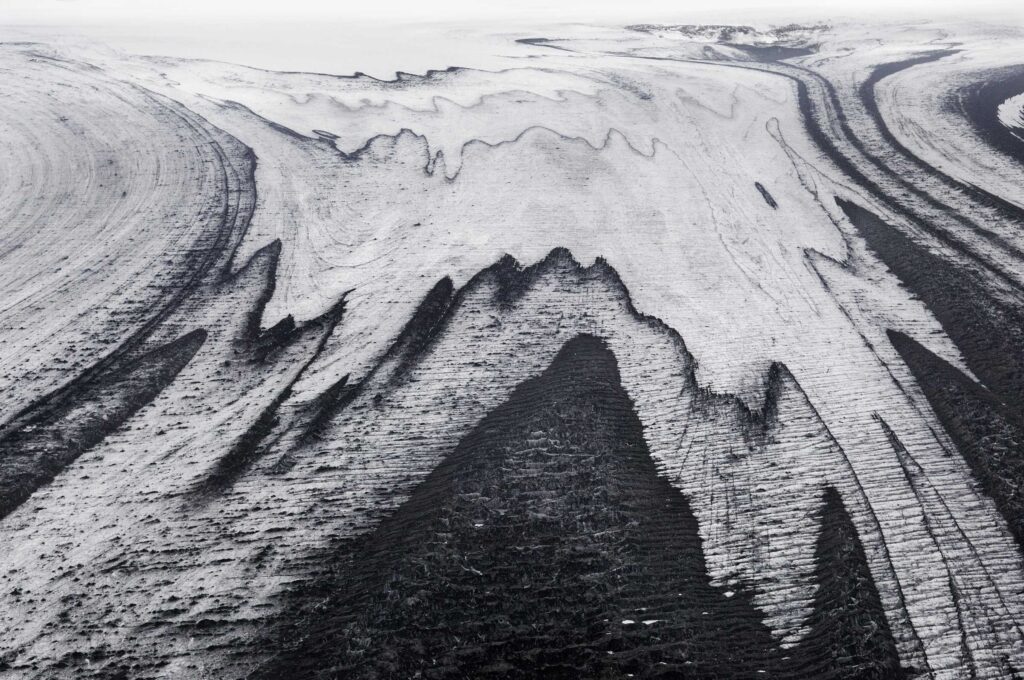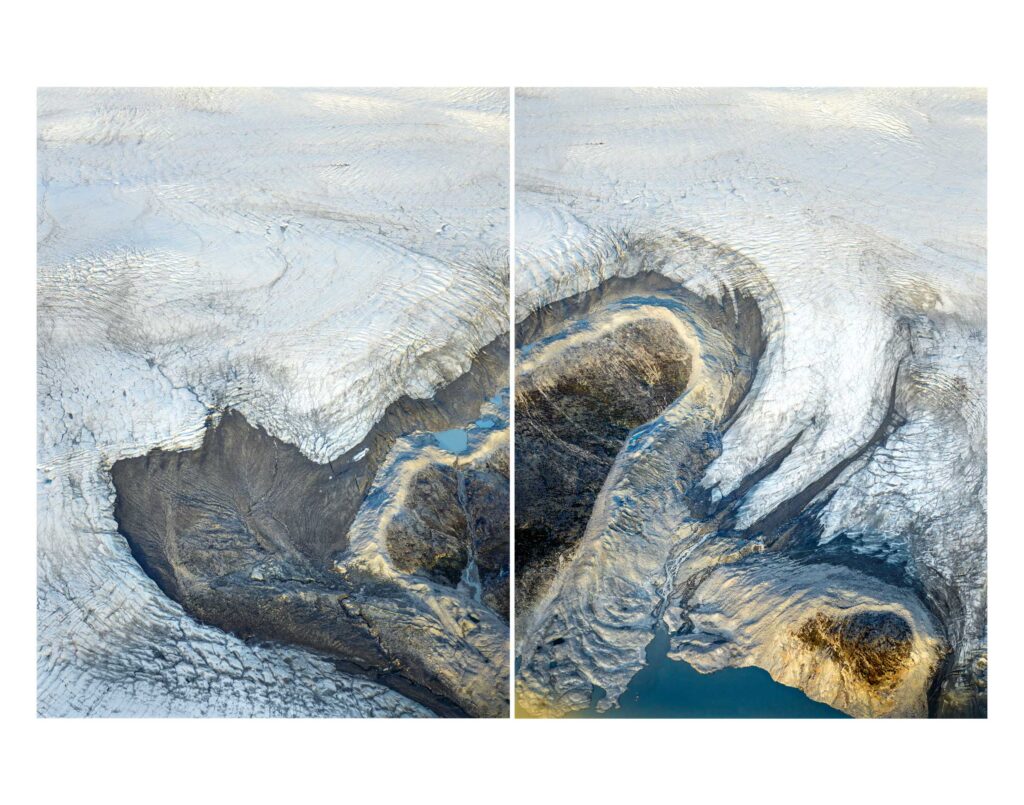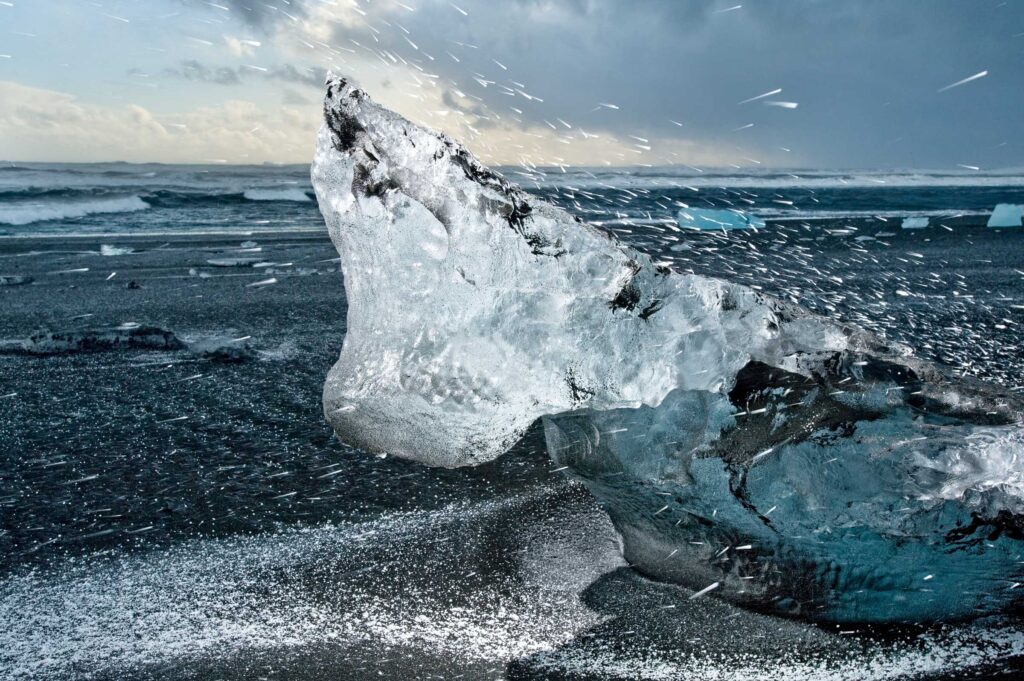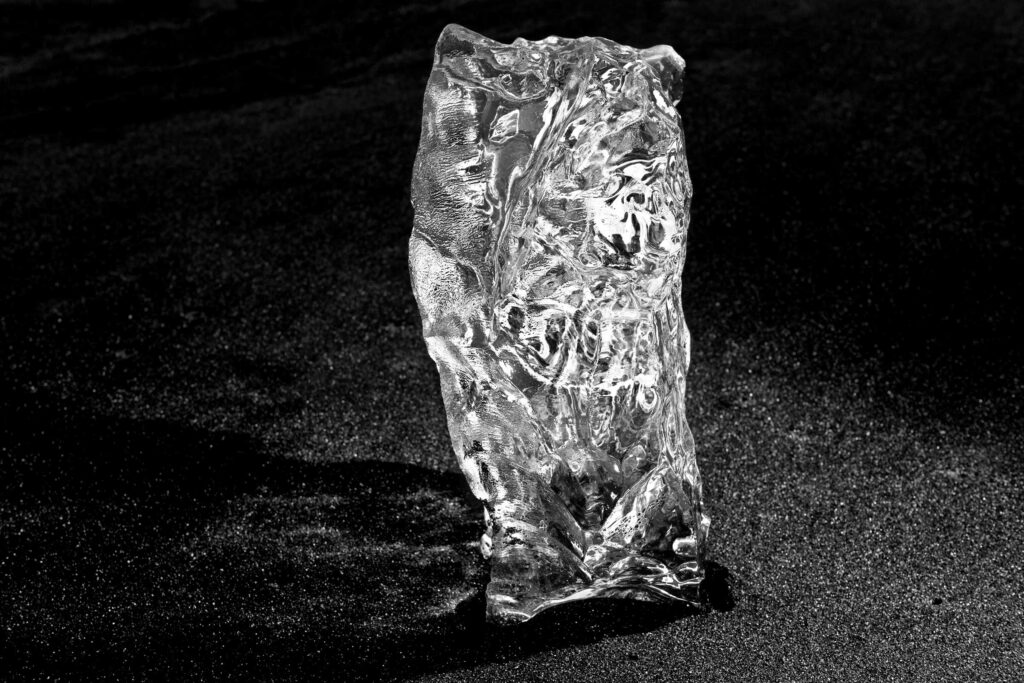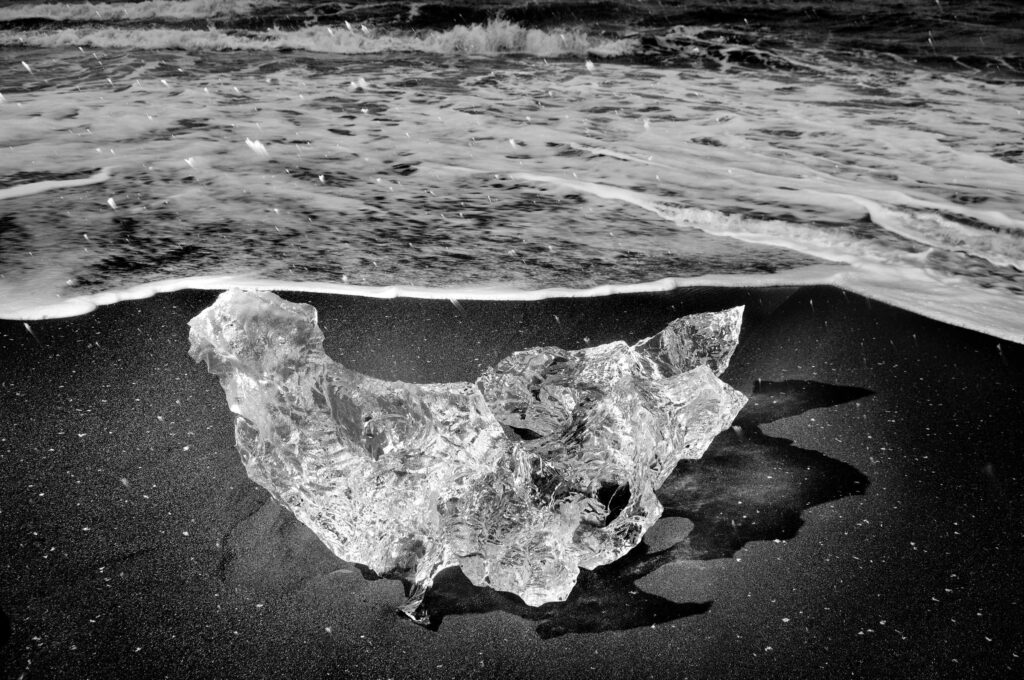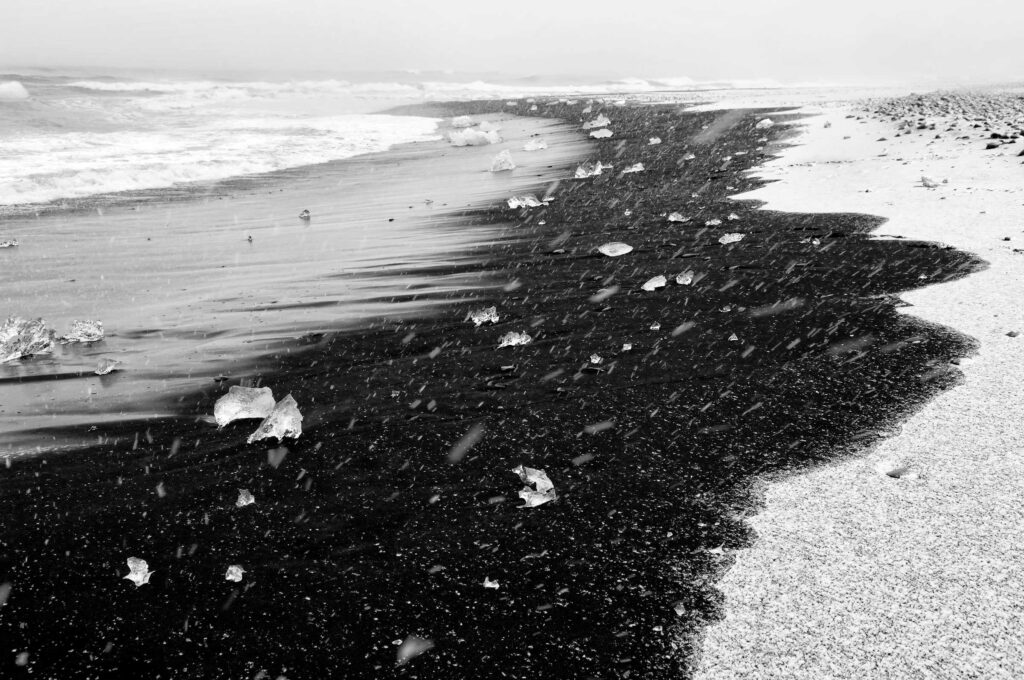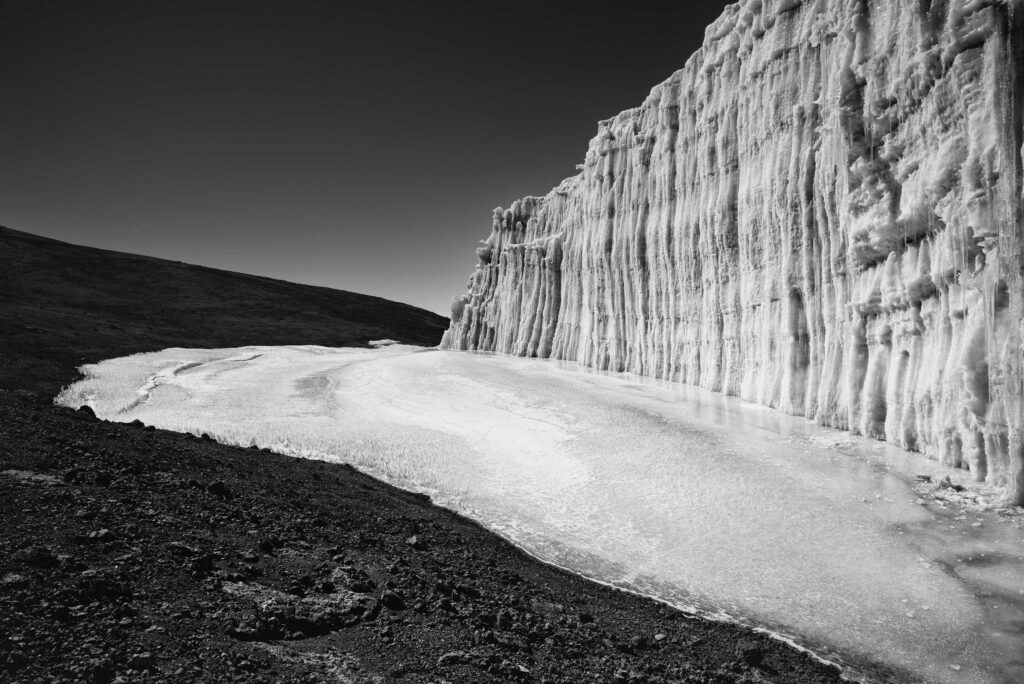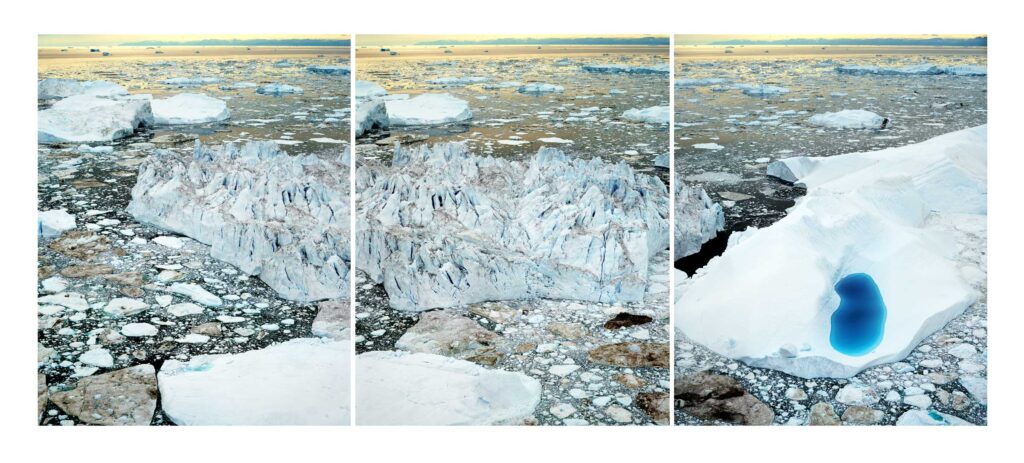Since the late 19th century, the warming climate has caused most ice masses in the world to retreat and/or thin. Photography assignments from The New Yorker (2005) and National Geographic (2006) led Balog to create the Extreme Ice Survey (EIS). It became the most wide-ranging, ground-based, photographic study of glaciers ever conducted.
This portfolio of single-frame images from EIS celebrates the elegance and beauty of glaciers, ice sheets, icebergs, and glacial meltwater. Balog and his team traveled through the U.S. (Alaska and Montana), Canada (British Columbia), Greenland, Iceland, France, Switzerland, Bolivia, Antarctica, and Nepal to create the images.
“A glacier begins to form when more snow falls in winter than melts in summer,” James writes in Ice: Portraits of Vanishing Glaciers (2011). “A permanent snowfield piles up. The accumulating weight of the snow squeezes air from between the crystals and turns it into ice. Ice is a protean creature—sometimes solid, sometimes as malleable as taffy—and gravity pulls it slowly downhill. Cool the air or bring blizzards, a glacier advances. Warm the air or stop the snow, a glacier thins and retreats. Tickle its belly with warm seawater and a glacier collapses…. Fickle as air, obdurate as rock, ice mutates into forms that seem more like the substance of dreams than of the dimensional world.”
